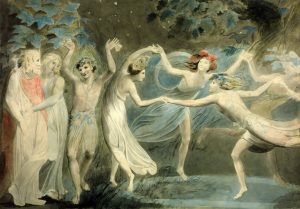 When I’m writing a screenplay, one of the first things I focus on is how my protagonist is going to change over the course of the story. This is the “character arc.” In Star Wars, for example, Lando begins as a self-centered, selfish rogue, but by the third movie he is volunteering to lead a desperate attack on the second Death Star. To do this in a roleplaying game, establish what your character is like right now. Even a vague idea, such as “human cleric,” gives you something to work with.
When I’m writing a screenplay, one of the first things I focus on is how my protagonist is going to change over the course of the story. This is the “character arc.” In Star Wars, for example, Lando begins as a self-centered, selfish rogue, but by the third movie he is volunteering to lead a desperate attack on the second Death Star. To do this in a roleplaying game, establish what your character is like right now. Even a vague idea, such as “human cleric,” gives you something to work with.
Your next step is to decide how you want the character to be later. It doesn’t have to be at the end of the campaign. That’s the beauty of character arcs. After you finish an arc, you can just begin another. In my cleric example, let’s decide he’ll eventually start worshiping another god. Knowing the start and the end of the arc allows you to figure out how to get there. But remember, with character arcs, the journey is the important thing, not the finish line.
At this point, you should enlist the aid of your GM. You can do it alone, but it is much easier if the person running the game is in cahoots with you. Provided that your GM isn’t actively trying to kill off your character in an old school campaign with killer dungeons (ahem, Tomb of Horrors, anyone?), you should have a willing partner in helping you breathe life into your character arc.
Types of Character Arcs
There are two main types of arcs: internal and external. Keep in mind that sometimes the end result you’ve chosen for your character will require a mix of these.
Internal Arcs: These emotion-driven arcs start with a character feeling or behaving one way and, through some inner turmoil, change to them feeling or behaving in a different way. In our cleric example, I might decide that the character has begun to doubt his faith, and this uncertainty, plus a growing awareness of the new god, is the path of his arc. Other examples of internal arcs could be a character obsessed with fame learning to work in the shadows or a character who fears magic eventually becoming a mage.
External Arcs: These physical or event-driven arcs begin with the character dealing with a personal obstacle that he or she needs overcome, and the arc ends after it is surmounted. The character’s basic personality does not change much with external arcs, but goals, knowledge, or drives do. In our cleric example, he might begin by learning his old god is actually a demon and seeks to banish it. Remember, this arc is not part of the campaign—it is a personal quest almost run between the player and the GM. Action movies have a lot of these types of arcs. Other examples could be a halfling trying to destroy a cursed ring or a woman looking to avenge her parent’s murder by tracking down her foes and dealing with them in some way.
Practical Advice
I like to write out where the character begins at the top of an index card and where he or she ends at the bottom. Then I jot down two or three (or more) signpost events that lead from start to end. Either the GM will provide these events or I will find ways to adapt in-game events to fit my list. I have a character in a game right now that I am changing from a noble fop playing the role of a highwayman into a bitter, driven, freedom-fighting patriot. My GM introduced some of the things that are changing him, and others I did myself.
Currently, my index card looks like this:
~ ~ ~
Start: Idealistic, noble fop pretending to be a highwayman
—Disillusioned by the opinions of his noble peers and family (Me)
—Country descended into Civil War (GM)
—Betrayed by his friends (Me)
—Learned his family is backing the “wrong” side in the civil war (GM)
—Captured and tortured by the enemy (Me and GM)
—
—
End: Fanatically driven but bitter patriot
~ ~ ~
For me, playing with arcs gives my characters goals and motivations that are separate from the main campaign but that also provide personality depth that keeps things interesting.
Next Time: We’ll look at the classic three-act structure and how you can use this screenwriting staple to interweave plotlines.

A thought-provoking article Brian! The concept/mechanic of story arcs is helpful to me as a GM and a player. Thanks!
Thanks, Brian. I really like this concept. It gives the character a purpose beyond the usual get rich and earn experience. I think it would definitely enhance my roleplaying of a character.